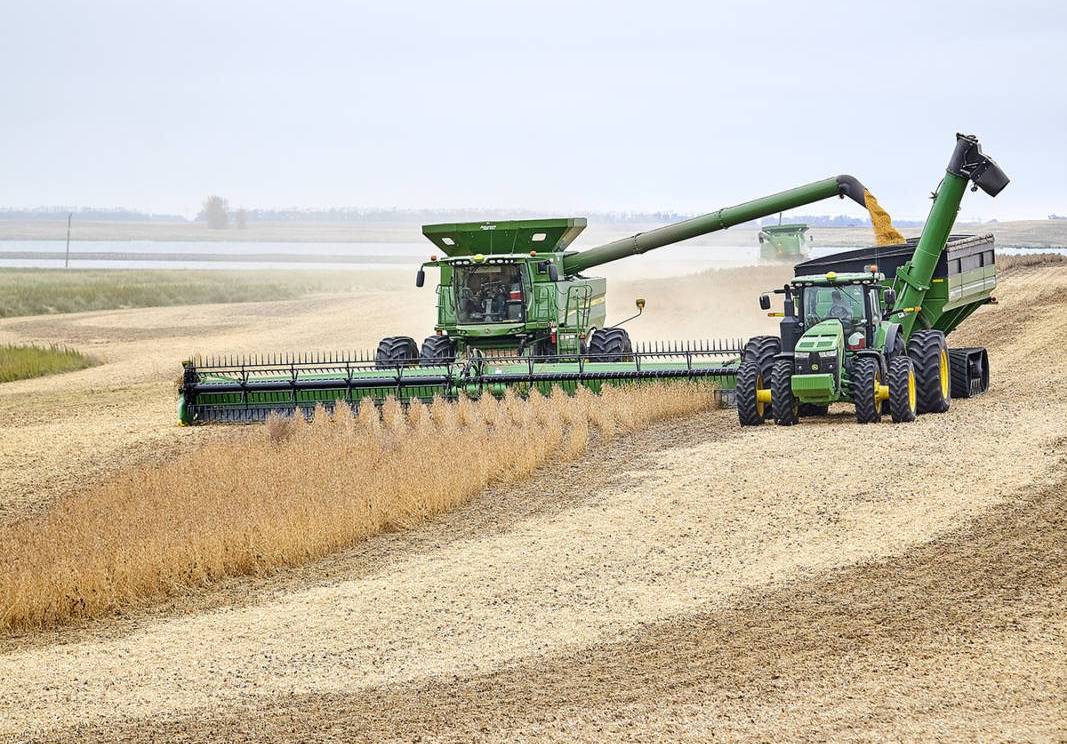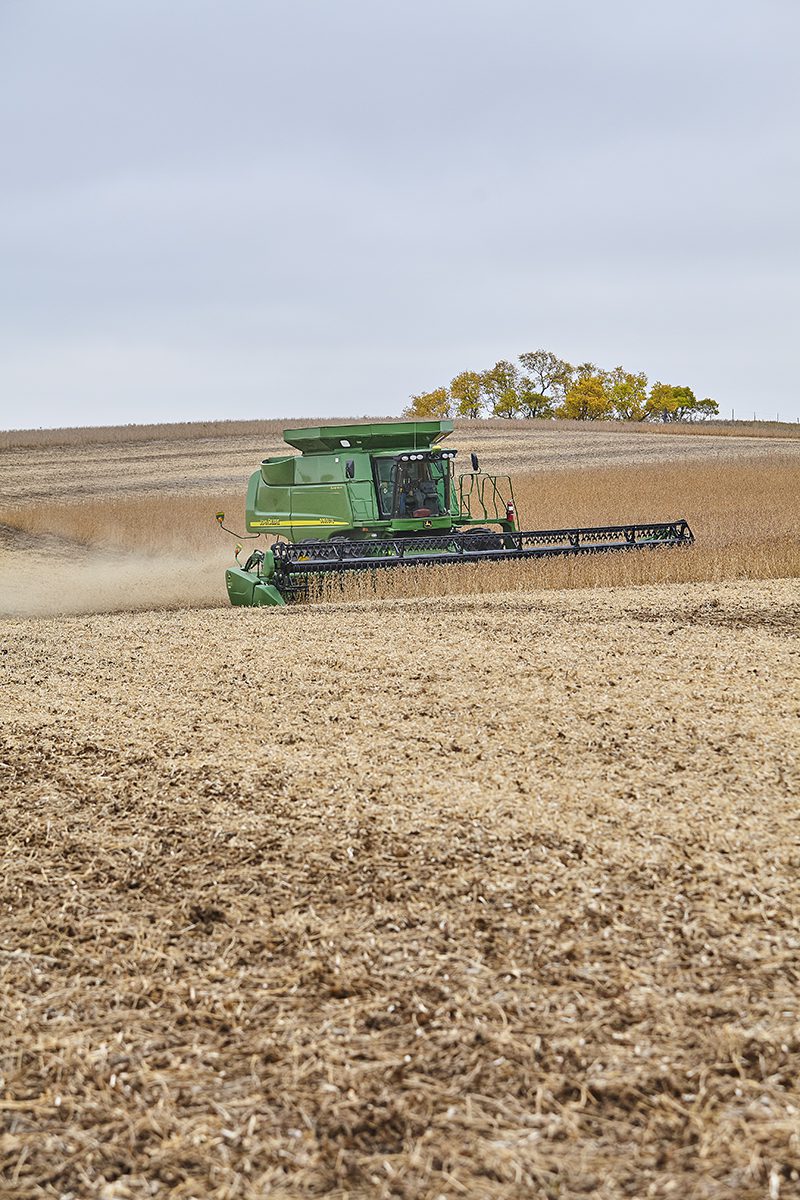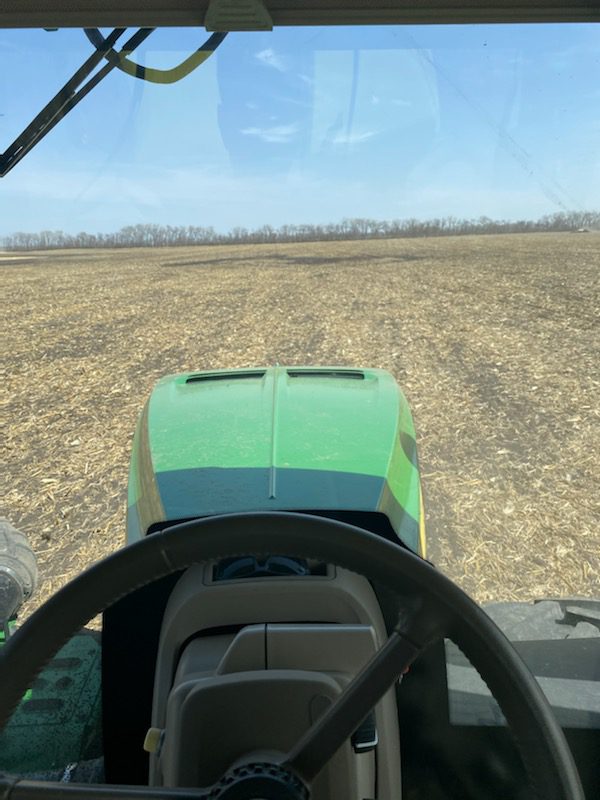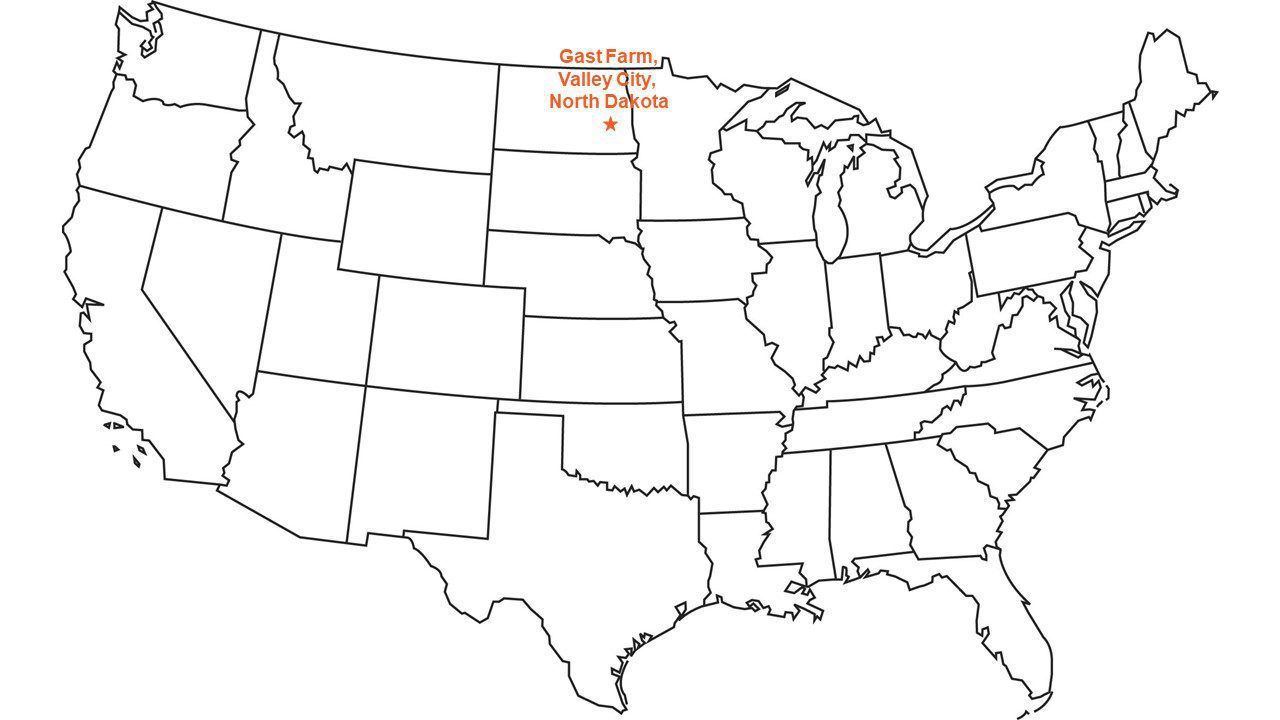 After a summer of drought, the wet fall in our area of the U.S. Northern Plains forced an extended harvest season. We finally finished harvesting soybeans at the beginning of November. That’s about when nightly temperatures started regularly falling below freezing.
After a summer of drought, the wet fall in our area of the U.S. Northern Plains forced an extended harvest season. We finally finished harvesting soybeans at the beginning of November. That’s about when nightly temperatures started regularly falling below freezing.
We finished harvesting corn by mid-November. When we harvest corn, we dry it to the ideal moisture content for storage. Our on-farm storage is limited, so when those storage bins are full, we sometimes break from harvesting for a few days to haul corn to the area ethanol plants. That, along with the weather, adds to the time it takes to finish harvest.
Both our soybean and corn yields varied dramatically by field, depending on if the field received any of the sporadic rains we got over the summer. While a few fields did well, many fields yielded poorly. Overall, our soybean and corn yields were below average.
 While finishing harvest, we have also been working on fall tillage. Because of our short growing season, we till, or disturb, the soil so that it warms up more quickly in the spring and provides a good seedbed for our crops.
While finishing harvest, we have also been working on fall tillage. Because of our short growing season, we till, or disturb, the soil so that it warms up more quickly in the spring and provides a good seedbed for our crops.
Many of the fields planted to corn this year may be planted to soybeans next year. The stalks, husks and leaves left behind by the corn crop can insulate the ground too well. In those fields, we use a vertical tillage tool with disks that break up that trash, or leftover plant material. The disks also stir up the top 7.5 to 9 cm, or 3 to 3.5 inches, of soil to mix that organic material into the soil so it breaks down better.
Soybean stems and pods leave much less organic material behind after harvest. In those fields, many of which could be planted to corn next year, we use a chisel plow, which is a different type of tillage tool. It digs 10 to 12.7 cm, or 4 to 5 inches, into the soil to break up hard compaction.
We will do as much tillage as we can before the ground freezes. So far, our daytime highs have been above freezing, but we are getting close to the point when the soil will be frozen. In fact, we got our first snow of the year the second week of November. Prior to that, we had about 65% to 70% of our fields tilled. Once the ground is frozen, we will focus on cleaning and maintaining our equipment so it can be put away for the winter.
 Fall tillage is one step in preparing for next season. Fortunately, we locked in prices for fertilizer a few months ago, when prices were about half of what they are now. We are also selecting soybean varieties and corn hybrids that we know work well in our system.
Fall tillage is one step in preparing for next season. Fortunately, we locked in prices for fertilizer a few months ago, when prices were about half of what they are now. We are also selecting soybean varieties and corn hybrids that we know work well in our system.
I have enjoyed sharing our work and commitment to raising high-quality, sustainable soybeans this year. Our growing season starts with preparing our fields, usually later than many other parts of the U.S. because we have to wait until the ground thaws and warms up. This year, planting went well because of the dry spring, but that dry weather started impacting yield even as the crops emerged. For a stretch during the summer, we had ideal growing conditions, but the summer drought took its toll as pods were filling. That led to an early start to harvest, but much-needed rains made harvest last longer than usual, while coming too late to support 2021 yields. However, with soil moisture replenished, we hope for a better crop next year.
Despite the challenges this year, we believe soybeans from North Dakota maintain their quality well because they store well through our cold winters. As winter gets underway here, the 2021 soybean crop is already moving from the Northern Plains of the U.S. to customers around the world. That’s our contribution to providing a reliable, sustainable supply of U.S. soy.
This field update is funded by the soybean checkoff. To share or republish part or all of this Ground Work 2021 update, please link to the original article and credit www.USSOY.org.
